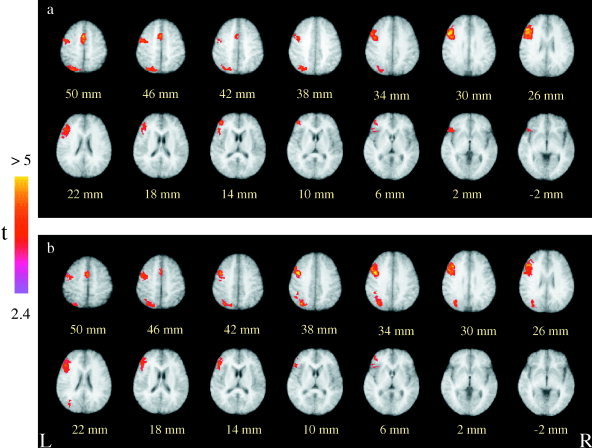Figure 2.

Averaged brain activations provoked by phonological analysis (rhyme decisions minus font size decisions) of Chinese characters (a) and English words (b) for late Chinese–English bilinguals. Normalized t‐maps (in color) pooled from 12 subjects are overlaid on the corresponding T1 images (in gray scale), demonstrating statistically significant activations (P < 0.01). Planes are axial sections, labeled with the height (mm) relative to the bicommissural line. a: Activations in reading Chinese peaked at the left middle frontal cortex (x = −44, y = 21, z = 26, t = 6.43) and also can be seen in the left precuneus (x = −28, y = −72, z = 43, t = 2.97), the left inferior parietal lobule (x = −45, y = −55, z = 54, t = 2.67) and supplementary motor area (SMA, x = −2, y = 4, z = 51, t = 3.39). b: Peak activation in reading English was seen in the left middle frontal cortex (x = −44, y = 18, z = 31, t = 6.28). Strong brain activations were also observed in the left precuneus (x = −31, y = −69, z = 43, t = 4.42), the left inferior parietal cortex (x = −43, y = −42, z = 36, t = 2.72) and SMA (x = −1, y = 4, z = 52, t = 3.27). According to a commonality analysis, activations that are common to Chinese and English phonological analyses were housed in the left middle frontal region (x = − 44, y = 20, z = 29) and precuneus (x = −29, y = −69, z = 44).
